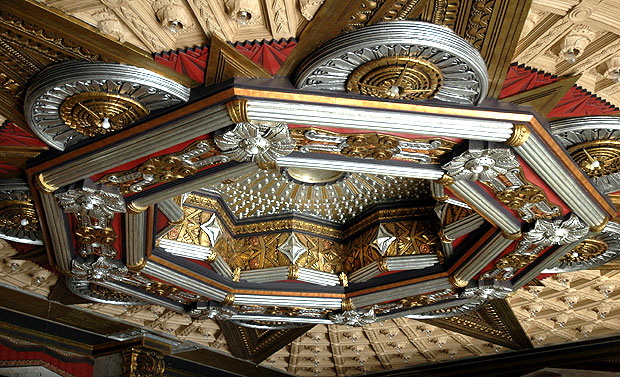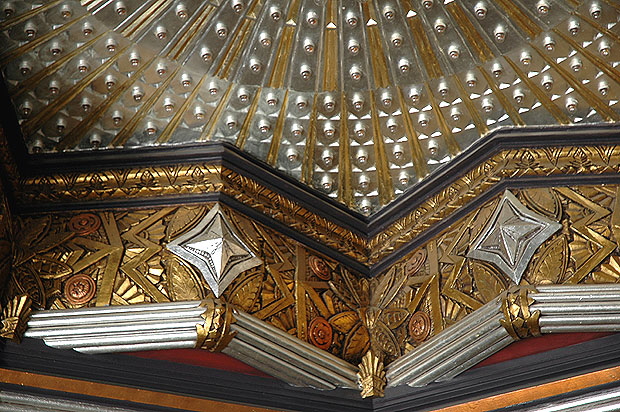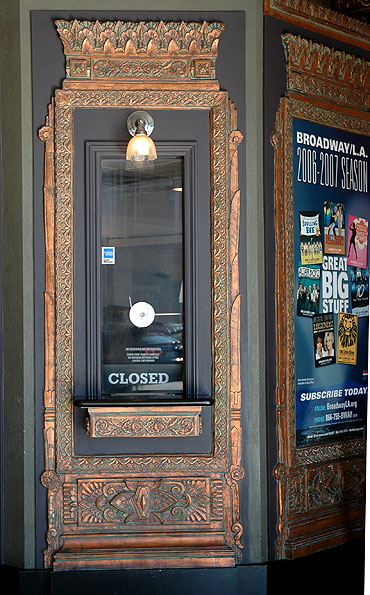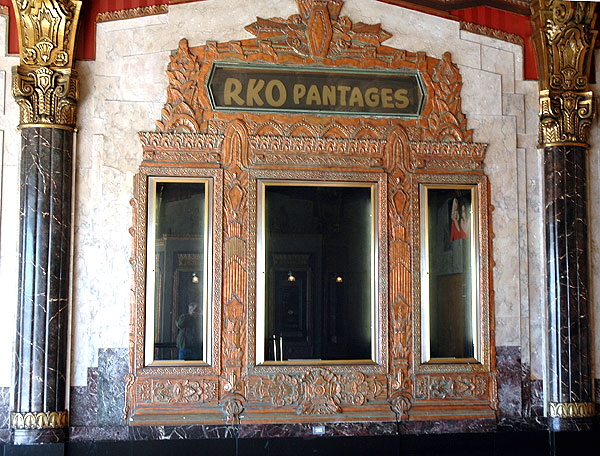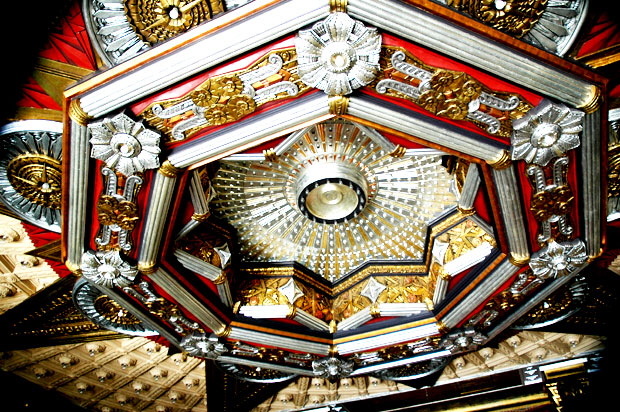|
The somewhat official history -
The Pantages Theatre came to life on June 4, 1930, opened by the great impresario, Alexander Pantages as part of the Fox Theatre chain. The opening bill was mixed: MGM's The Floradora Girl, starring Marion Davies, an edition of Metronome News, a Walt Disney cartoon, Slim Martin ("The Maestro of Mirth and Melody") conducting the Greater Pantages Orchestra and finally, a Fanchon and Martin stage piece, The Rose Garden Idea.
The opening night audience couldn't have been more impressed by the show than they were by the theatre. Alexander Pantages had conceived of this theatre, the last built to bear his name, as a fitting monument to his position in the entertainment industry. Although the Wall Street Crash occurred between groundbreaking and completion, no expense was spared in its construction. The cost of the Pantages Theatre itself, not counting the considerable expense of theatrical and projection equipment, was $1.25 million - the equivalent of about $10 million in today's dollars.
The Pantages, first to last, was designed for maximum audience comfort, with over 40% of the interior space devoted to public areas, lobbies, lounges and restrooms. One of the first movie houses built after the advent of talking pictures, the Pantages Theatre boasted the most elaborate sound equipment anywhere in the world. For the first time sound could be 'channeled', either from a film's soundtrack or from remote sources, to the public areas of the building.
The mixed bill of movies and staged companion pieces was continued for the first two years of the Pantages' life by its managers, Rodney and Lloyd Pantages, then the Fanchon and Martin prologues were dropped to be replaced occasionally by locally produced extravaganzas. Other sorts of entertainment proved the theatre's versatility: in 1940, for example, Leopold Stowkowsky conducted the Los Angeles Philharmonic for an entire season at the Pantages, featuring soloists Serge Rachmaninoff and Fritz Kreisler.
Howard Hughes, through RKO pictures, acquired the Pantages as part of his national chain of movie houses in 1949. A contractual stipulation ensured that the name of its builder would be retained and thus it entered the 1950s as the RKO Pantages. That was the decade when the Pantages played host to Hollywood's most spectacular annual event - The Academy Awards, which were handed out to lucky winners (including Humphrey Bogart, Vivien Leigh and Frank Sinatra) on its stage each year from 1949 to 1959. Yul Brynner received his Best Actor award on the Pantages stage in 1956 for The King & I, and came back to the theatre twenty years later, again to star as the King of Siam, this time in a record-breaking run of the live show.
In 1959, Universal Pictures booked Spartacus into the Pantages as a long-run, sure-fire attraction, but on the condition that the house's capacity be scaled down. The reduction to 1,512 seats forced the Oscars to relocate, but there were still star-studded evenings in store for the Pantages. In 1963, celebrity patrons were treated to a special screening of Cleopatra at $250 apiece, the proceeds going to the construction fund for the new Music Center.
Pacific Theatres, operated by the Forman family, purchased the Pantages from RKO in December, 1967, after having run the theatre for two years on a lease agreement. Pacific briefly closed the house down for refurbishing and a general relighting, something the theatre had needed for some time. The Pantages reopened, refreshed, again taking its place as one of the finest movie houses on the west coast and continued as such for nearly a decade. But in January, 1977 the silver screen went dark for the last time and work was begun on the Pantages' latest and greatest incarnation.
On February 15, 1977, the Pantages opened its doors again, this time to patrons eager to see the national touring company of the Broadway smash, Bubbling Brown Sugar. The Forman family's Pacific Theatres had been joined by the Nederlander Organization and it was their ambition to bring live theatre back to Hollywood in a big way. The Nederlanders, among the nation's foremost theatrical impresarios, lent their monumental expertise to the task and under the combined Nederlander-Forman aegis, the Pantages opened as one of the finest legitimate theatres in California.
It has remained so to this day. During the 1977 run of Man of La Mancha , the Pantages was restored to 2,691 seats, nearly its original seating capacity, and proved an immediate favorite with both artists and audiences. If favor, esteem and popularity are any indication, the Pantages Theatre is likely to serve the Los Angeles area forever.
And so it will, perhaps.
|
